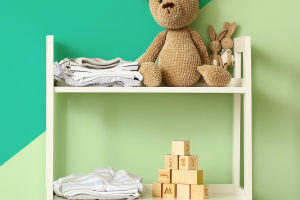Staying hydrated is essential for good health, and drinking enough water has many benefits. When it comes to choosing a drinking cup, the market offers various materials to suit different needs.
But what material cup is the best for drinking water?
1. Glass Cups
Among all materials, glass is relatively safe. Glass mugs are usually made of inorganic silicate and fired at high temperatures (above 600 degrees Celsius). Because of its chemical stability, harmful substances are not generated during the firing process. The glass surface is also smooth, and easy to clean, and bacteria and dirt are less likely to accumulate on the cup wall.
Note: When using a glass cup for the first time, pour a small amount of hot water and gently shake it to preheat the cup before pouring it into hot water.
2. Plastic Cups
Many people worry that plastic cups can cause cancer, but as long as you choose a brand that meets national quality inspection standards, they are relatively safe. Polypropylene (PP) cups have good heat resistance, with a melting point of up to 167 degrees Celsius, and are chemically stable. They are the only plastic material that can be used in the microwave. Polycarbonate (PC) mugs, on the other hand, should not be filled with hot water or exposed to sunlight as high temperatures may cause the release of toxic Bisphenol-A.
Note: Although the surface of the plastic cup seems smooth, there are many voids where dirt can hide. Plastic cups are also more likely to absorb dust and bacteria.
3. Ceramic Cups
Enamel cups with various beautiful and diverse patterns are popular among young people. They can be divided into three categories:
a. No color glaze, colorless interior ceramic mugs: Ceramic mugs are mainly made of clay and form a layer of glaze on the surface of the clay after high-temperature calcination. Under normal circumstances, this layer of glaze does not contain harmful substances.
b. Underglaze ceramic mugs: This type of mug has pigments applied first and then undergoes high-temperature calcination. The pigment is stored in the glaze below and will not leach harmful substances even when hot water is poured in. It is relatively healthier and more environmentally friendly.
c. Glazed ceramic mugs: This type of mug has paint applied on top of the glaze, which can seep out harmful substances during use, posing risks to human health.
Note: Tea drinkers often use alabaster pots or purple sand teapots, which are not glazed inside and outside. These pots have tiny stomata, good breathability, and strong adsorption, which can effectively prevent the dissipation of tea fragrance.
4. Stainless Steel Cups
Stainless steel cups are rust-resistant, durable, and not fragile, making them a popular choice for insulation cups. They are a top choice for modern people.
Note:
a. Do not use stainless steel cups for acidic drinks, such as juice, coffee, carbonated beverages, etc. Also, do not hold soy sauce, vinegar, vegetable soup, tea, etc. for a long time.
b. When washing stainless steel cups, avoid using strong alkaline or strong oxidizing chemicals, such as soda, bleach, etc.
5. Disposable Cups
Disposable cups are available in paper and soft plastic materials. The most commonly used type is the paper plastic cup, which has a layer of paper on the outside and a layer of laminated paper on the inside with an internal polyethylene plastic film. It is relatively safe. Milk tea shops and coffee shops often use PET plastic cups that generally do not leach harmful substances unless exposed to high temperatures.
Note:
Be sure to recognize the safety of the SC logo when buying products. But from the environmental point of view is not recommended to use disposable products.


